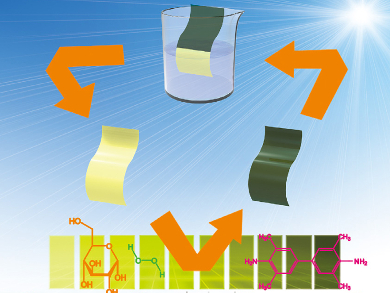Testing paper is used widely in laboratories for the quick and easy detection of certain compounds. Occasionally, these papers contain some quite sophisticated chemical technology. Ying‐Jie Zhu, Tuan-Wei Sun, Chinese Academy of Sciences, Shanghai, and University of the Chinese Academy of Sciences, Beijing, and colleagues have developed nanofibers composed of a hydroxyapatite nanowire core coated with a MIL-100 Metal-Organic Framework (MOF) shell using a layer-by-layer deposition method. These fibers were then used to create test paper for the detection of hydrogen peroxide, glucose, and ascorbic acid, compounds typically tested for using peroxidase enzymes.
Layers of MIL-100(Fe), made up of iron metal centers and tricarboxylic acid linkers, were deposited in cycles on apatite nanowires. The group attributes the formation of fibers to interactions between the Ca2+ ions of the apatite and the COO– groups on the MOF. These fibers were easily pressed into sheets or discs and cut into pieces as required. Using colorimetric tests, the team found that the fibers are able to catalyze oxidation reactions for typical peroxidase enzyme substrates. Glucose, in particular, can be selectively detected in the presence of other sugars, and its concentration could be ascertained by monitoring absorbance at 658 nm.
The paper could even be recycled by dipping it in ethanol, preparing it for another detection test. Materials such as this have the potential to replace some of the more expensive and inconvenient biosensors that are currently used, such as peroxidases and other natural enzymes.
- Hydroxyapatite Nanowires@Metal-Organic Framework Core/Shell Nanofibers: Templated Synthesis, Peroxidase-Like Activity, and Derived Flexible Recyclable Test Paper,
Fei-Fei Chen, Ying-Jie Zhu, Zhi-Chao Xiong, Tuan-Wei Sun,
Chem. Eur. J. 2016.
DOI: 10.1002/chem.201604813



